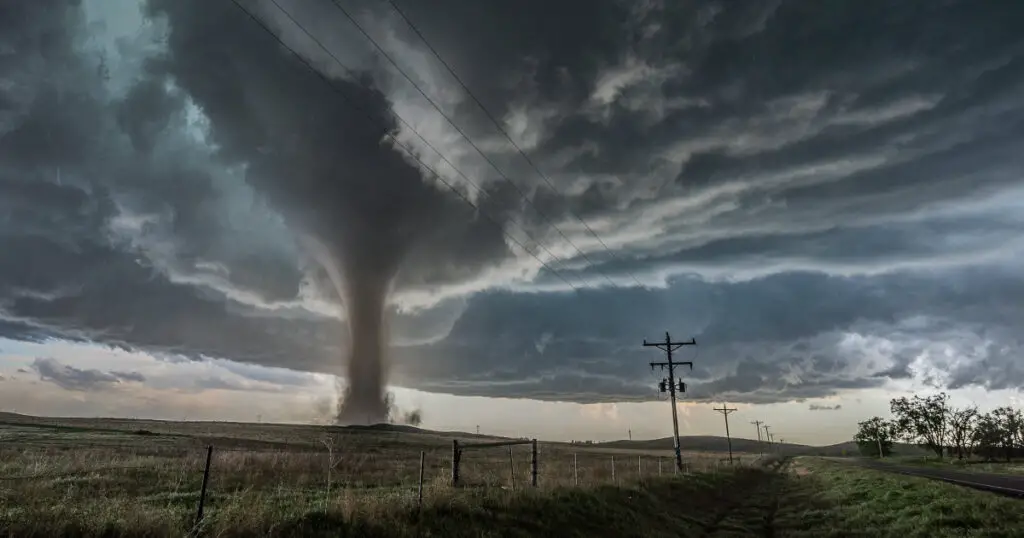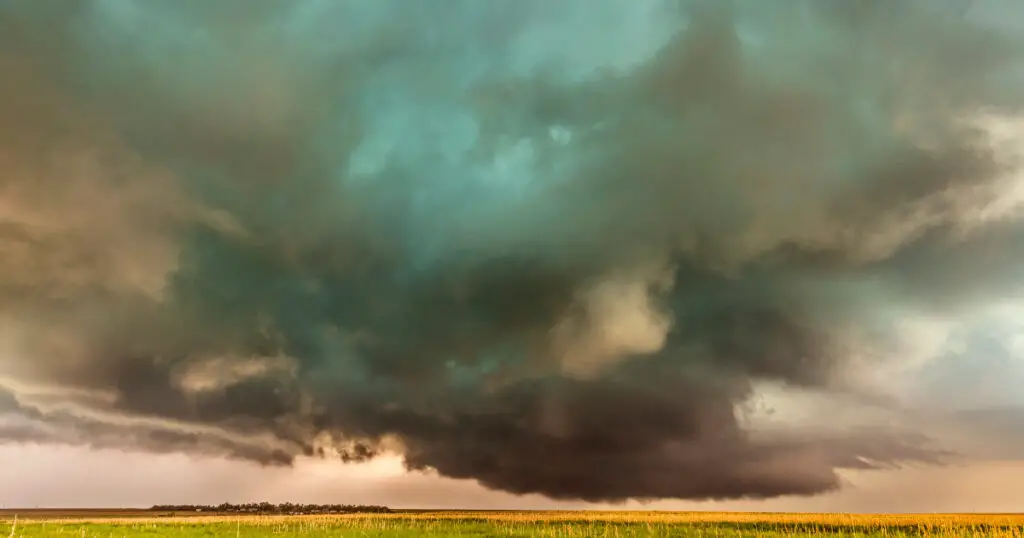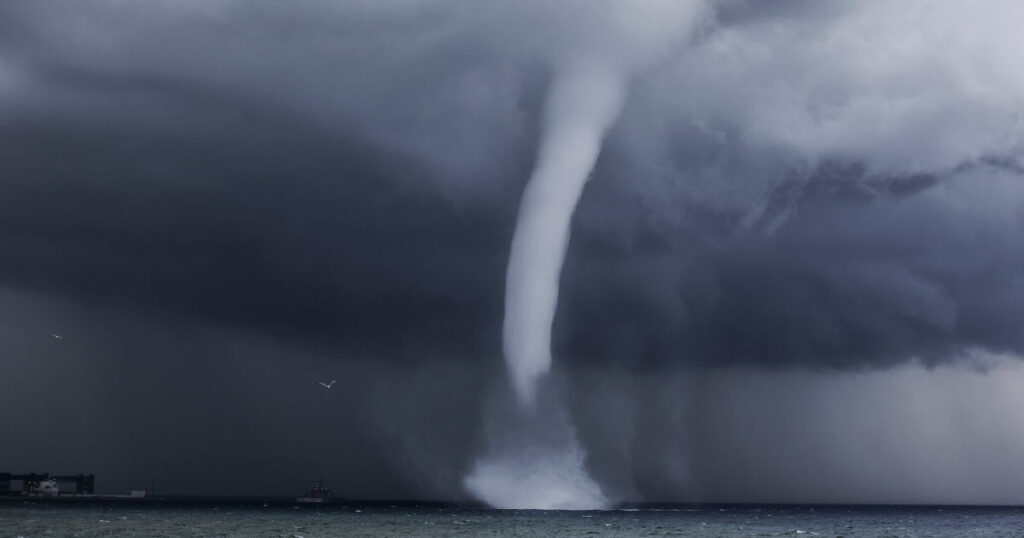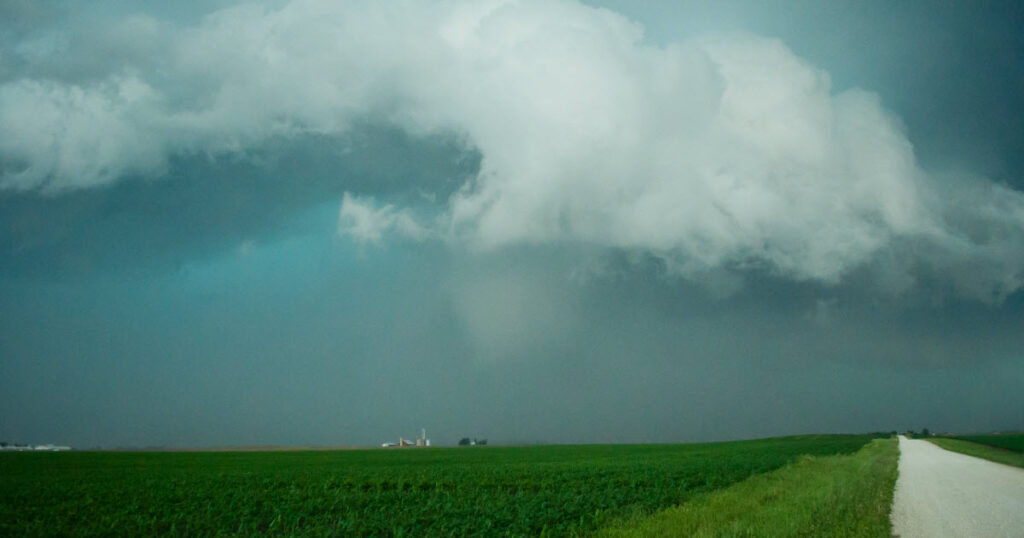Did you know there are different kinds of tornadoes? One type of tornado, a stovepipe tornado, is a distinct type of funnel cloud or twister that differs from other common tornado forms.
In this article, we will go over what a stovepipe tornado looks like, how it acts and behaves, what environmental or meteorological conditions exist that create this kind of tornado, and where stovepipe tornadoes occur most frequently.
Let’s start by taking a closer look at the most common shapes a tornado assumes when it forms.
Different Kinds of Tornadoes
There are several different kinds of tornado, including:
- Stovepipe Tornado,
- Rope Tornado,
- Cone Tornado, and
- Wedge Tornado.
They differ from one another in terms of appearance, size, and the way they are able to form.
Be aware that it is possible for a tornado to change into a different type. If a tornado is on the ground for a longer than average period of time, it may change into a different type of tornado. Tornadoes are able to change and transition throughout their life cycles.
Let’s take a closer look at each type of tornado, starting with the Stovepipe Tornado:
Stovepipe Tornadoes
Stovepipe tornadoes are similar to the traditional cone shape you may be familiar with.
The primary distinction between these two types of tornado is the fact that stovepipe tornadoes usually have the same width at the base of the thunderstorm that helps generate them as they do where they meet the ground.
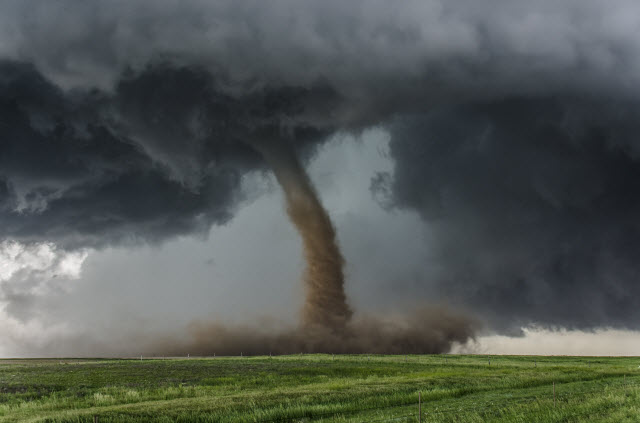
This balanced width from top-to-bottom resembles a stove pipe on old wood stoves, and that’s where they get their name.
Rope Tornadoes
The rope tornado is among the most common and smallest kinds of tornadoes.
This type of tornado looks a bit like a rope in its shape, hence its name. It’s extremely common for a tornado to start out as a rope tornado and to again become a rope tornado before it dissipates.
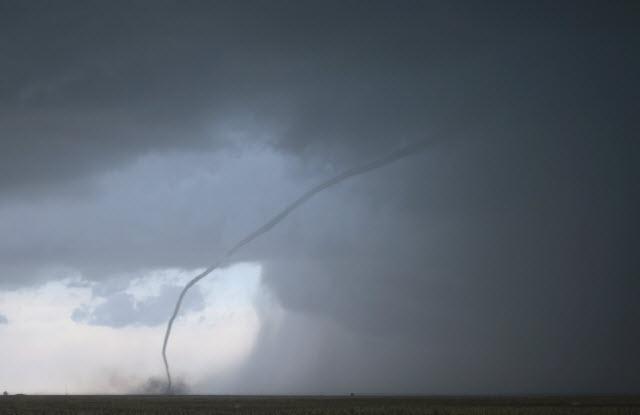
It’s possible for this type of tornado to have a duration of just a few minutes. If this happens, it may remain a rope tornado for its whole life.
Don’t underestimate how much damage a rope tornado may cause just because it’s so small. If you find yourself in the path of this kind of tornado, it is still very dangerous.
A rope tornado may become stronger as it tightens and becomes narrower.
Cone Tornadoes
The cone tornado is the type of tornado you probably think of when talking about tornadoes. Like other types of tornadoes, the cone tornado gets its name from its shape.
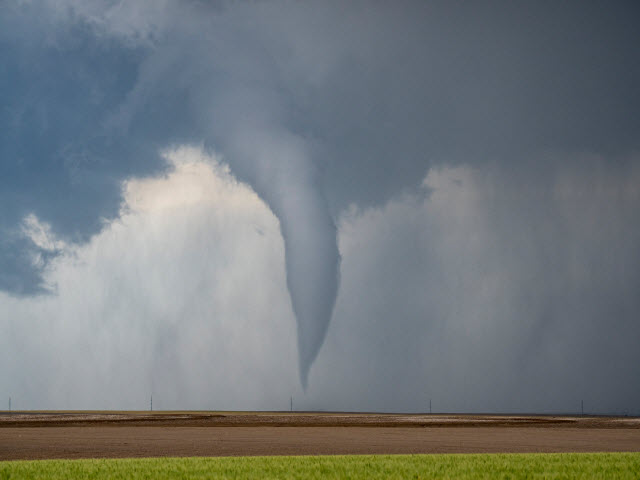
A cone tornado is wider at the top than where they touch the ground. At that point, they have a narrower appearance. A cone tornado has a narrower shape when it touches the ground than at the point when it meets the base of the thunderstorm that is associated with it.
Cone tornadoes tend to have a wider path, or a much wider path, than rope tornadoes. Accordingly, a cone tornado tends to create a lot more damage than a rope tornado.
Wedge Tornadoes
The term “wedge tornado” is used to describe a tornado that appears to be wider than the space between the ambient cloud base and the ground. There are many different factors that can impact how wide a tornado looks. This can include the real size of the tornado, the air’s moisture content, cloud base height, and the intervening soil and terrain and dust lofting. The term “wedge tornado” is not a scientific one. While it’s true that there have been many large and destructive tornadoes called wedge tornadoes, not all wedge tornadoes are strong ones.
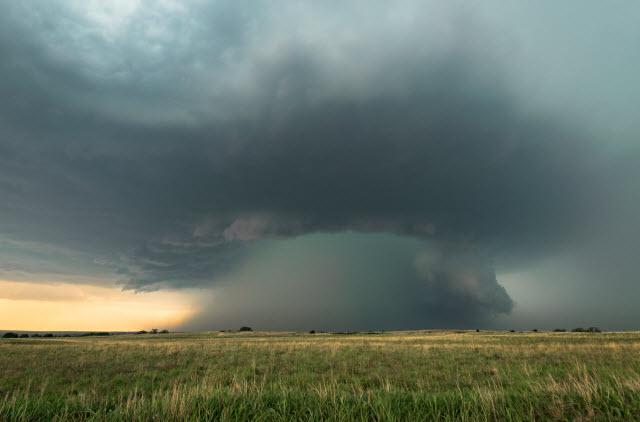
Wedge tornadoes have the shape of an upside-down triangle or wedge. This strange wedge shape can make it more difficult to quickly identify it as a tornado. This is why they are so often reported to strike with inadequate warning. Wedge tornadoes are also frequently “rain-wrapped”, meaning that thick layers of rainfall encircle the tornado funnel. This obscures our ability to see the tornado.
| Related Posts |
|---|
Tornadoes described as wedge tornadoes are relatively rare. In fact, a mere 2% or 3% of tornadoes between 1950 and 2015 were wedge tornadoes.
The very large base of wedge tornadoes mean that their damage can spread over an especially large space of ground. They tend to develop when there is moist, warm air that comes into contact with dry and stable air in a place where there is strong vertical wind shear and other conditions.
More Information on Stovepipe Tornadoes
Stovepipe tornadoes lack the same width as wedges but they still look wide at the base in appearance. Similar to wedge tornadoes, the winds of a stovepipe tornado can be very severe and there can be a large damage path.
Stovepipe tornadoes can be long-lived and intense. They can be especially dangerous if they hit areas that are densely populated. One example of a significant stovepipe tornado took place on June 4, 2010 in Big Springs, Nebraska.
The width or shape of a tornado does not determine the storm’s strength or destructive potential. Intensity varies among tornadoes no matter what their size, shape, and location. It is true, however, that very strong tornadoes tend to be on the larger side.
Another factor that helps determine the intensity of a storm is the length of its track. A tornado with a longer track has more potential to be strong than one with a short track. Keep in mind, however, that these are relatively weak correlations. Severe weather systems are complex and there are many factors at play.
Tornadoes and Thunderstorms
As already mentioned, tornadoes are usually generated in thunderstorms.
Supercell thunderstorms are most likely to create tornadoes. In fact, approximately 20% of these thunderstorms generate tornadoes. A weaker tornado may last approximately 10 minutes and usually travels a very limited distance. Stronger tornadoes, on the other hand, are able to endure for as long as several hours and they are able to travel for even hundreds of miles in some cases.
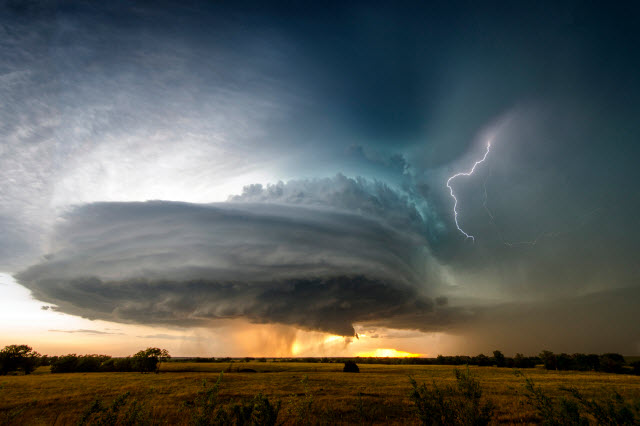
It’s possible in some cases that a supercell thunderstorm may produce several tornadoes simultaneously.
A multi-vortex tornado is a tornado that has at least two smaller subvortices. These will swirl around the storm’s center. Each of these subvortices are able to generate small and separated areas of especially high winds.
This can lead to situations on the ground where there is a severe damage in one place and hardly any in an area right beside it. It’s not possible to identify subvortices visually, as they are usually obscured by debris and dirt that is sucked upwards.
Understanding Tornadoes is Key For Preparation
Learning about the different kinds of tornadoes is an important first step. Now, it’s time to research how to create a tornado safety plan.
